A small colorful songbird that stands out from the rest of his species due to his huge range of iridescent coloration!
Meet the Orange-bellied leafbird
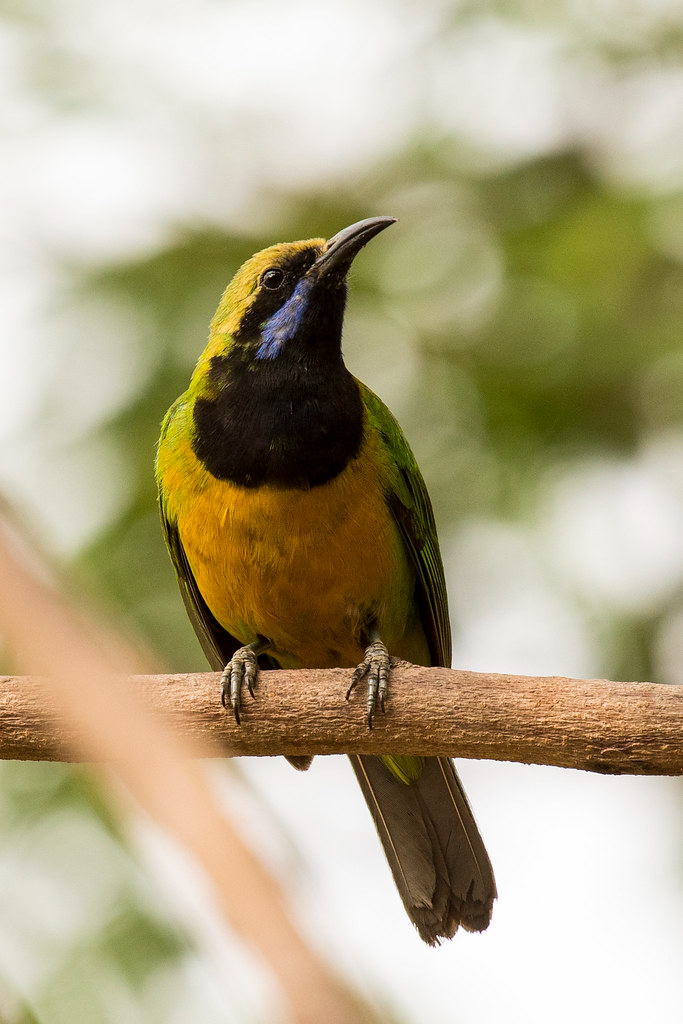
Photo Courtesy of srikaanth.sekar / CC BY-SA 2.0
The orange-bellied leafbird (Chloropsis hardwickii), is a bird native to the central and eastern Himalayas, Yunnan, and northern parts of Southeast Asia. Strangely enough, Orange-bellied Leafbirds were named for their orange bellies. Their backs are green, while their tails and wings have blue markings. They have a black and blue patch over their throats and chests. Leafbirds, in general, were named for the fact that their mostly green plumage helps them blend in well to their tropical habitat. Leafbirds under stress will lose most of their colorful feathers, this is thought to help them blend in better, confusing predators.
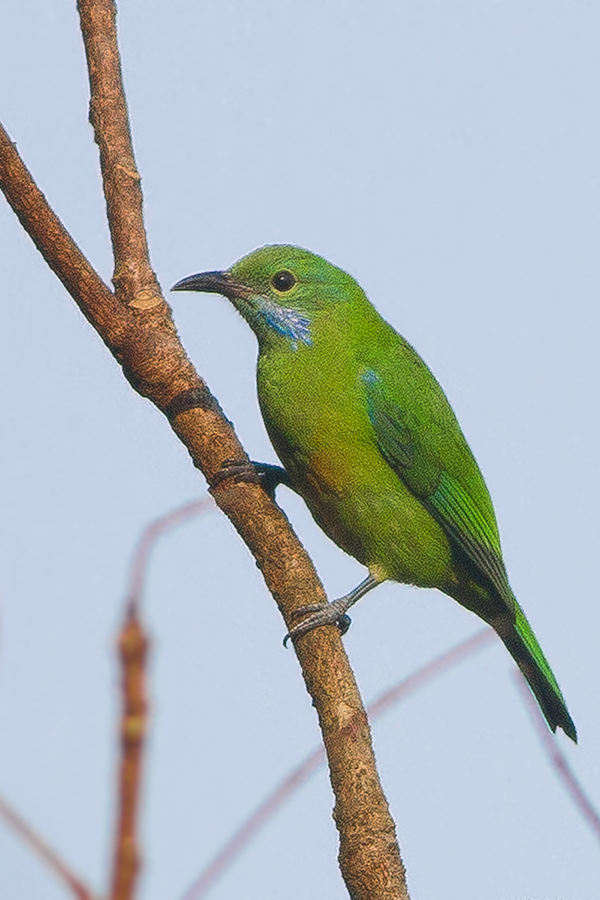
Photo Courtesy of Dibyendu Ash / CC BY-SA 3.0
They have forked, brush-tipped tongues and down-curved bills with stiff, hair-like feathers at the base that protect their eyes from the legs and wings of their insect prey.
Females can be easily differentiated from males by being far less colorful, while immature birds look more like females.
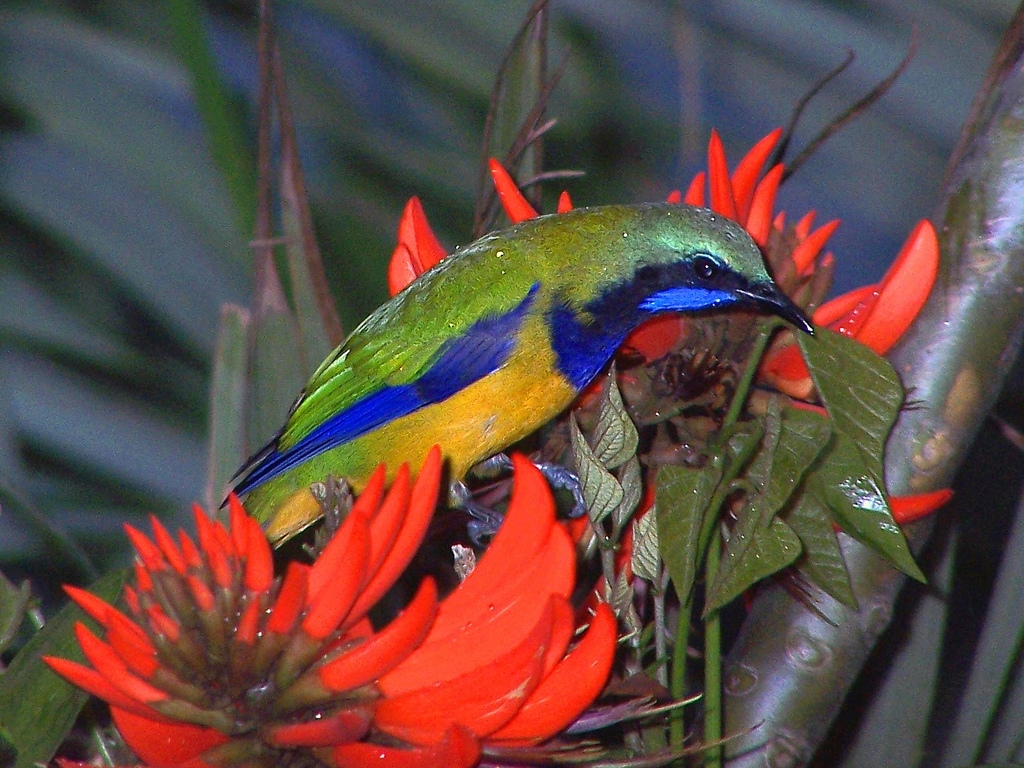
Photo Courtesy of Kclama, Charles Lam / CC BY-SA 2.0
This bird’s range extends from Vietnam to Cambodia northwards to most of southeastern China, Hong Kong, and Macau.
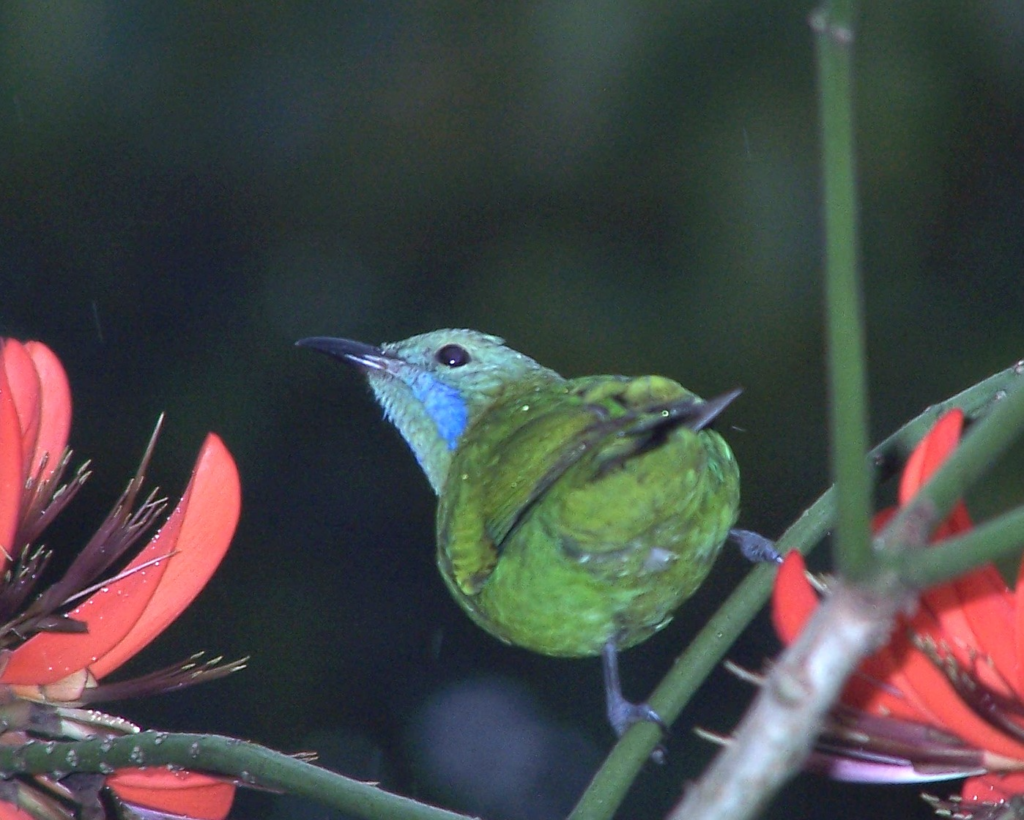
Photo Courtesy of Kclama, Charles Lam / CC BY-SA 2.0
These birds like to forage alone or in pairs in the sub-canopy of where they live. Here they feed on insects as well as taking fruit, berries, and nectar.
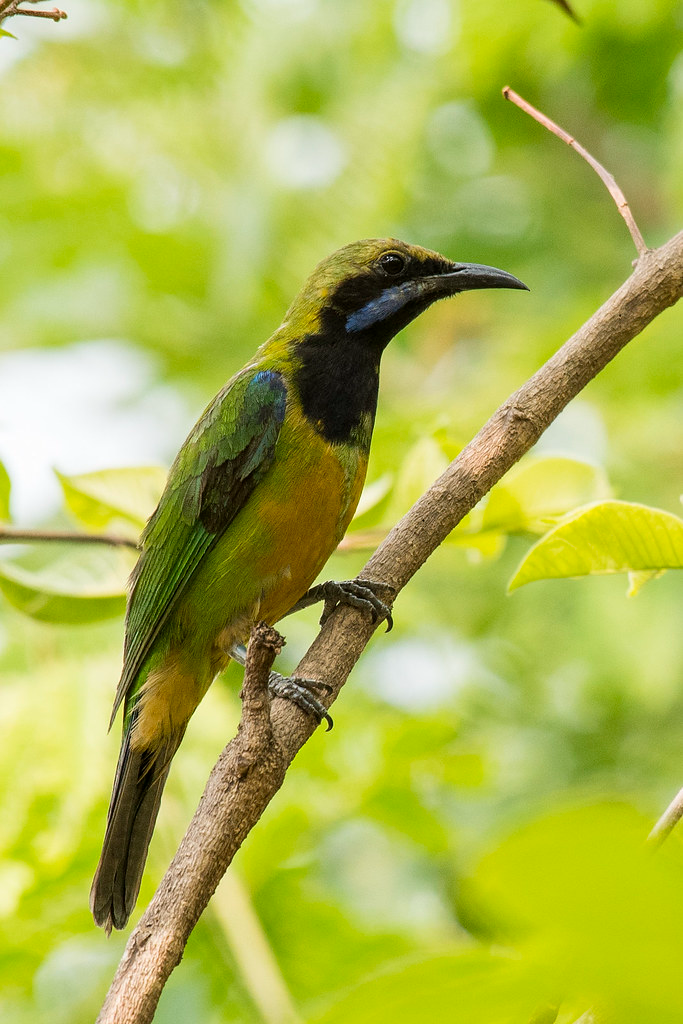
Photo Courtesy of srikaanth.sekar / CC BY-SA 2.0
Orange-bellied leafbirds like to dine on insects, using their long sharp beaks and brush-tipped tongue to pick them from the bark and leaves of trees. They will also flush their prey into the air pursuing them on the wing. They also like nectar, using their spiked tongues for taking it from tubular flowers. Even hovering in the air like a hummingbird while doing so.
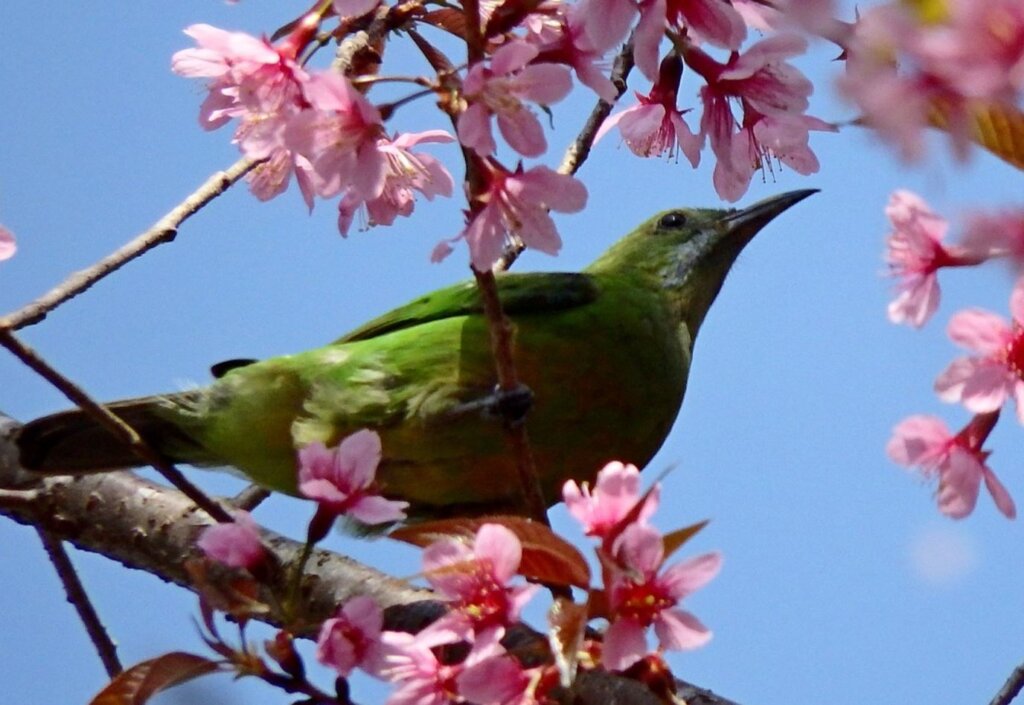
Photo (cropped) Courtesy of 孫鋒 林 / CC BY-SA 2.0
During the breeding season, these birds build open cup-shaped nests from roots, fine stems, leaf parts, rootlets, and fibers which they suspend from the edges of twigs at the end of tree branches. Two to three pinkish eggs are laid within which the female incubates for around 14 days. The male keeps her fed until eggs have hatched and go on to help feed the young.
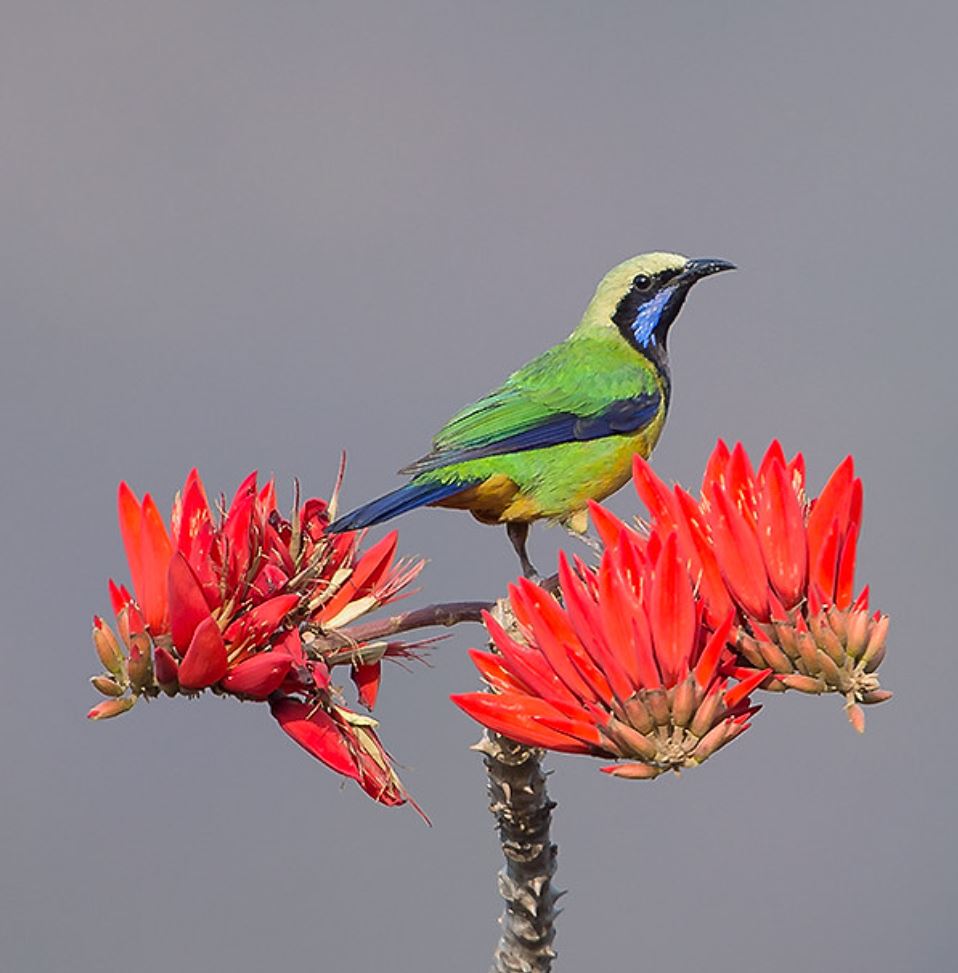
Photo Courtesy of Koshyk / CC BY 2.0
Due to this species very large range, it does not approach the thresholds for Vulnerable under the range size criteria set by the IUCN.
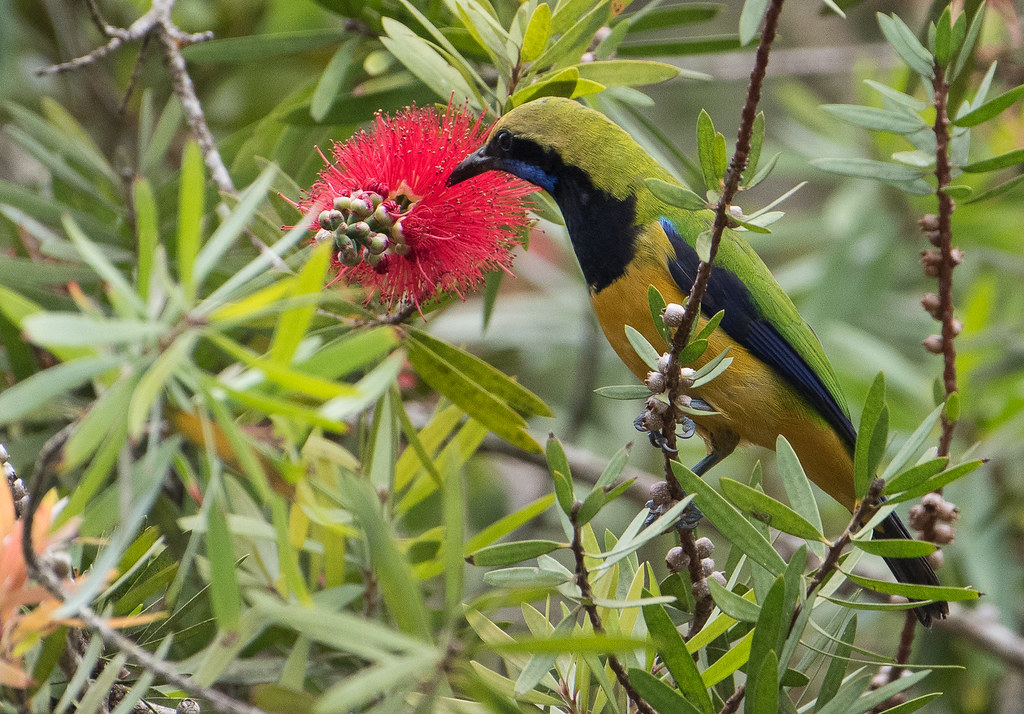
Photo Courtesy of billbacon1968 / CC BY 2.0
Watch this bird right here in the video below:




